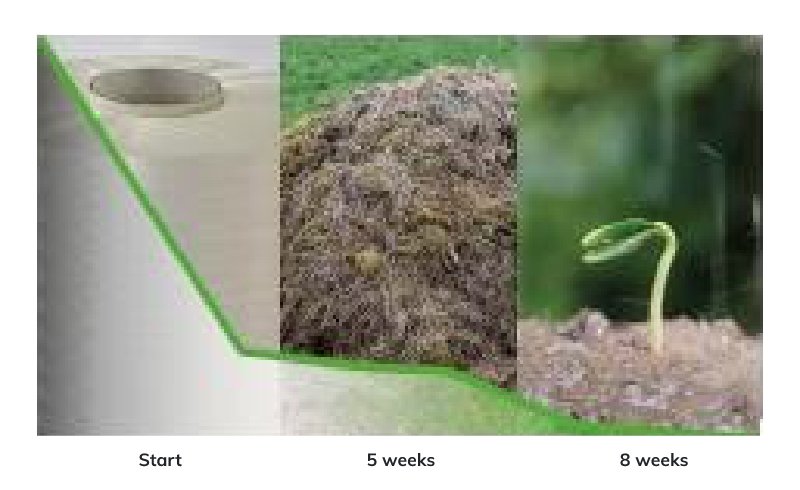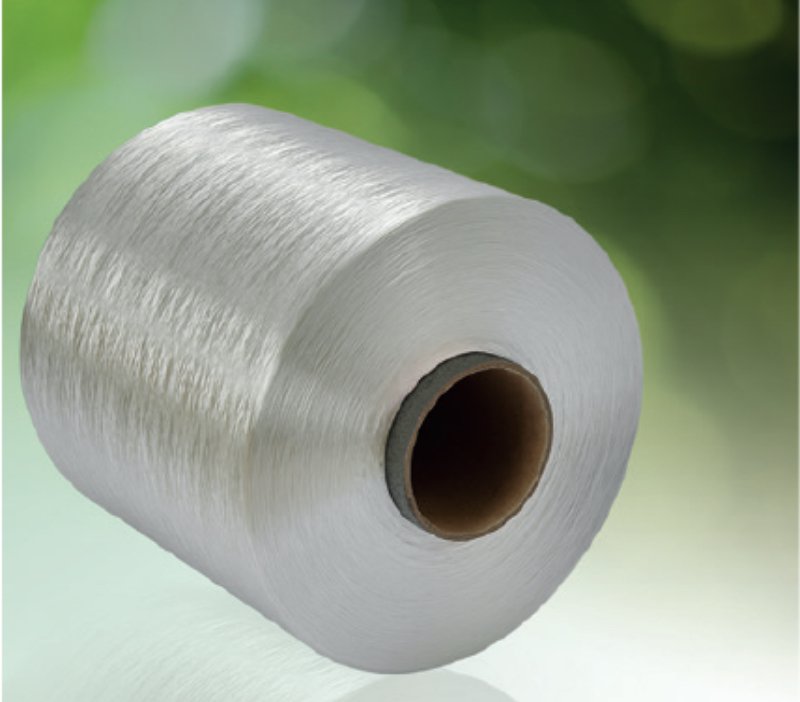Enka® Nylon BIO
Yarns from Bio-based Polymers
Sustainable options for technical textiles.
Diolen® – bio-based and bio-degradable high-tenacity polyester yarn
Diolen® yarn
- Based on polylactic acid polymer (PLA)
- 100% bio-based
- Biodegrades under industrial
- composting conditions
- Shows low moisture absorption
- Provides good UV stability
- Low flammability

Biodegradation after storage under composting condition accordance to EN 14046:2003; Source: ITV Denkendorf
*) Source ”Polylactic acid fibers“, D W FARRINGTON et al., NatureWorks LLC
Diolen® – technical high-tenacity yarn
- Diolen® demonstrates superior tensile performance over textile yarns
- Diolen® is an option for a variety of sustainable applications, e.g.:
- Substitution for non-biodegradable fixtures in agricultural and horticultural environments
- Sustainable packaging reinforcement for paper-based adhesive tapes
| Polymer | Melting Temperature,Tm | Glass Transition Temperature,Tg | Density | Moisture Uptake at 50% PH* | Tensile Modulus dry* | Tensile Modulus Conditioned 50% RH* | Bio-base | CO2 Emission* |
|---|---|---|---|---|---|---|---|---|
| oC | oC | g/cm3 | % | MPa | MPa | % | Kg polymer | |
| PLA | 160-180 | 55-60 | 1.24 | 0.2 | 2900-3000 | n.a. | 100 | 0.6 |
| PET | 250-260 | 70 | 1.38 | 0.4 | 2800-3100 | n.a. | 0 | 3.4 |
Polymer properties of bio-based PLA polymer vs. fossil-based PET polymer
*) Sources: Mary Ann Liebert, Inc. Vol.6, no.4, August 2010, Industrial Biotechnology,
Natureworks
Enka® Nylon BIO – bio-based high-tenacity polyamide yarn
Enka® Nylon BIO – bio-based high-tenacity polyamide yarn For existing technical fiber applications it would be particularly advantageous if yarns manufactured from bio-based polymers could be considered as so-called ”drop in“ alternatives for current fossil-based products. In this case, similar processing conditions could be used without the need to make significant adaptions. In comparison to fossil-based PA 6.6 polymer, the bio-based PA 4.10 polymer was judged to provide a very good match:
- Melting temperature and glass transition temperature are at the level of PA 6.6
- Lower density than PA 6.6
- Picks up less moisture Provides 40 % higher tensile modulus under humid storage conditions
- 70 % bio-based
- CO2 emission balance is almost zero

Technical bio-based PA 4.10 yarn VS. Technical fossil-based PA 6.6 yarn
Spinning evaluations carried out on an industrial scale proved that the bio-based PA 4.10 polymer can be converted into technical multifilament yarn:
- Tensile characteristics are largely comparable to those of fossil-based PA 6.6 technical yarns
- At low elongations, the modulus of bio-based PA 4.10 yarn is certainly at the level of PA 6.6
- Elongation at break is higher
- Breaking force is slightly lower
- In Mechanical Rubber Goods application PA 4.10 yarns/ cords provide good adhesion to rubber and fatigue resistance at the level of reference PA 6.6
| Polymer | Melting Temperature,Tm | Glass Transition Temperature,Tg | Density | Moisture Uptake at 50% PH* | Tensile Modulus dry* | Tensile Modulus Conditioned 50% RH* | Bio-base | CO2 Emission* |
|---|---|---|---|---|---|---|---|---|
| oC | oC | g/cm3 | % | MPa | MPa | % | Kg polymer | |
| Bio PA 4.10 | 250 | 70 | 1.09 | 3100 | 2900-3000 | 1750 | 70 | 0 |
| PA 6.6 | 255 | 74 | 1.14 | 32500 | 2800-3100 | 1250 | 0 | 6.4 |
Polymer properties of bio-based PA 4.10 vs. fossil-based PA 6.6,
*) Sources: DSM primary data for PA 4.10 (EcoPaXX), Plastics Europe eco-profiles for PA 6.6
